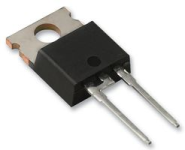There are only hundred electronic rules for paralleling different batteries (possible to parrallel any stuff, but under some rules.. "sarcasm"
 1st
1st Make sure
same voltage or similar at parallel connecting moment (curent flow from one to other battery only depends on the two batteries voltage difference and internal resistence summed & using ohms law to get amperes) (example one battery 50mOhm at 60V connect to a 67V battery 100mOhm, sooo I = U/R means volts difference 7V divided by 150mOhm means 47A initial charge flow.. this maybe ruins bms charge port mosfets or if ghost bms(guess brand?) it will put out 47A to cells, if a 5P battery means 47/5 equals almost 10A charging current per cell..)
2nd MAKE SURE BOTH battery BMS's have
COMMUN Charge/Discharge PORT ( if U dont care about this, soon U maybe get a fire anywhere in tha future or if Ur lucky maybe not, just a parallel battery malfunction.. and if uR lucky not to be attached to a ghost bms similar to surreal artist, search on web "dali paintings" daly?

More content to be included at pdf document
 Is possible to parallel different chemistries & different number Serial elements battery ex. LiIon and LiFePO4 (3S // 4S) =7S?
Is possible to parallel different chemistries & different number Serial elements battery ex. LiIon and LiFePO4 (3S // 4S) =7S? 
Yes, butt, make sure both bms's have
commun charge discharge port! No, 3S parallel with 4S equals 3,5S
the LithiumIon battery example 12V nominal work at interval 12,6V down to 9V (3S) and LifePO4 (4S) is a 4S range max 14,4V down to 10V
soo at math we have commun interval for matching different elements
this means both batteries will work in
parallel at interval 12,6V down to 10V
under 10V only 3S lithium battery output (from 10V to 9V), and above 12,6V only LiFePO4 battery working (from 14,4V down to 12,6V)
This is considered a
unstable electronic system because behavior changes along voltage curve(paralleling 3S LiIon with 4S LiFePO4 will make a 14,4V down to 9V wide voltage range battery..)
Allways include a commum charge/discharge port bms at any battery and avoid separate charge/discharge ports(unless U know what Ur doing, but thos ports could run into unprotected state and lithium cells could be crazy to go on fire!! soo avoid that!)
Shakira says put a ring on it, and also says, put a commun charge/discharge port bms at all batteries worlwide! that will save a lot of complicated situations..

A great weekend for everyone










